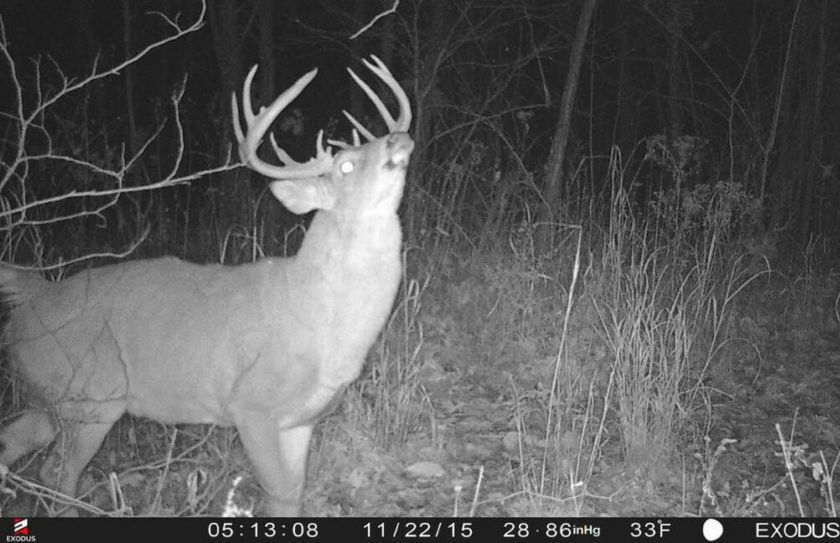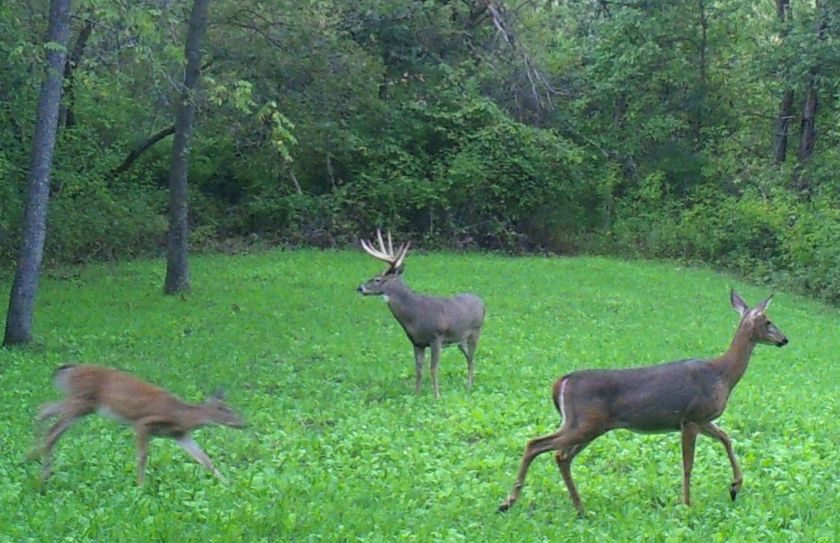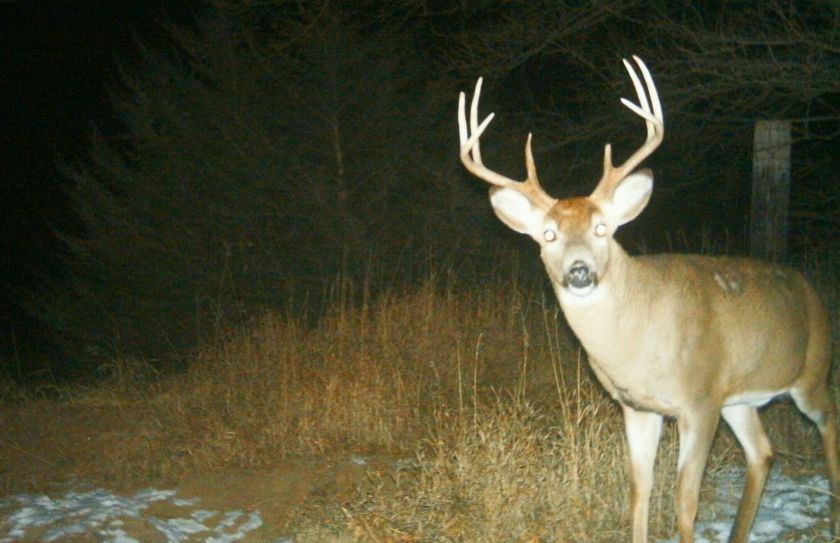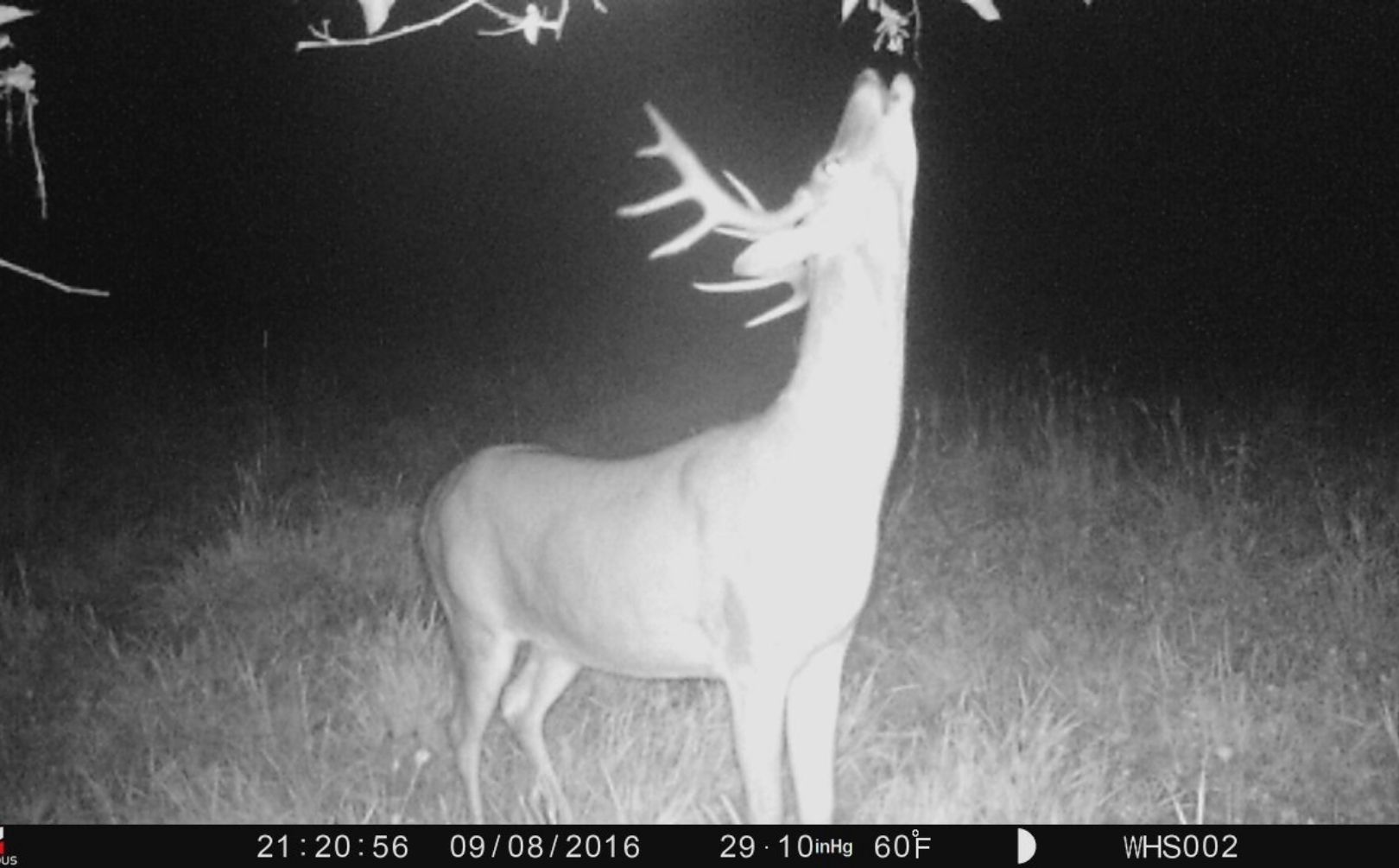
Have you fallen victim to "Whitetail Moon Phase Mania" in the past? I have, and I have a few books to prove it! Whether you believe that the variety of the moon phase actually has an effect on the quality of the hunt, the rut, or not; it is a worthy debate. After hunting whitetails since the mid 80s as part of my passion as well as part of my career, you can probably imagine that I have developed a few ingrained ideas concerning hunting mature bucks by moon. Here are my two favorite "moonisms":
1. A great moon phase with poor temperature and weather conditions is still a poor day to be in the woods. However, a poor moon phase with great temperature and weather conditions is a GREAT DAY to be in the woods. I actually stake my hunting career on this one, each and every hunting season and have for a very long time.
2. A particular moon phase does appear to influence the feeding times of deer on a daily basis. I have experienced this to be especially true when there is a rising Full Moon.

*Make sure to check out my whitetail book series including, "Whitetail Success By Design" and "Food Plot Success By Design", to help you find mature bucks this hunting season!
The picture below reveals exactly why I follow the moon phase of the day, to make sure that I am realizing the opportunity that is created each and every season when the whitetail moon phase is just right. When a full moon is rising it is time to hit the woods, no matter what phase of the hunting season it currently is, because a sliver of opportunity is created for the savvy whitetail hunter. So that you don't miss this window of opportunity, you need to make sure that you are hunting at exactly the right time of the day, to take advantage of this whitetail moon phase feeding strategy.
*When does the rut begin in your neck of the woods? To make sure that you are planning to capture the most opportunity that you can this hunting season, regardless of which moon phase or weather event you are currently hunting in, make sure to watch the 2016 Rut Forecast!
Whitetail Moon Phase Feeding Strategy
Deer feed 5 times during a 24 hour period. Deer are rythmic pattern feeders and what that means is that their hunger pains are peaking about every 4-5 hours. But just like you and I, if deer feed more or less during one feeding, they typically feed the opposite during the next. Several events can alter the timing of feeding schedules:
1. Moon Phase
2. Extreme Weather Patterns
3. Sunrise and Sunset Timing
4. Extreme Hunting Pressure
Have you ever watched a particular doe family group enter an evening food source at just about the exact same time every single night? Unlike the whims of a mature buck, the feeding times of a does can be so consistent that if they don't hut the food when you expect them to, something is amiss. A whitetail's "dinnertime" is their their afternoon feeding time, a time when you can count on nearly every deer in the woods to be heading towards their favorite food source. But when a full moon is rising, something seems to change.
During a full moon phase, I have experienced that whitetails head to their evening food sources later in the day, and sometimes after dark. During a full moon phase the feeding conditions well into the middle of the night, are safe and social. Deer will often bed within or near their safe, open food sources the majority of the night while filling their bellies to the point of fat and full. By the time the hours of pre-dawn begin, whitetails are completely stuffed and lazy after a long night of heavy feeding and social activities, while most often already in their bedding areas at daybreak. The rush on food early in the night creates only a small need to feed at daybreak, but what happens next? Opportunity for the savvy hunter!
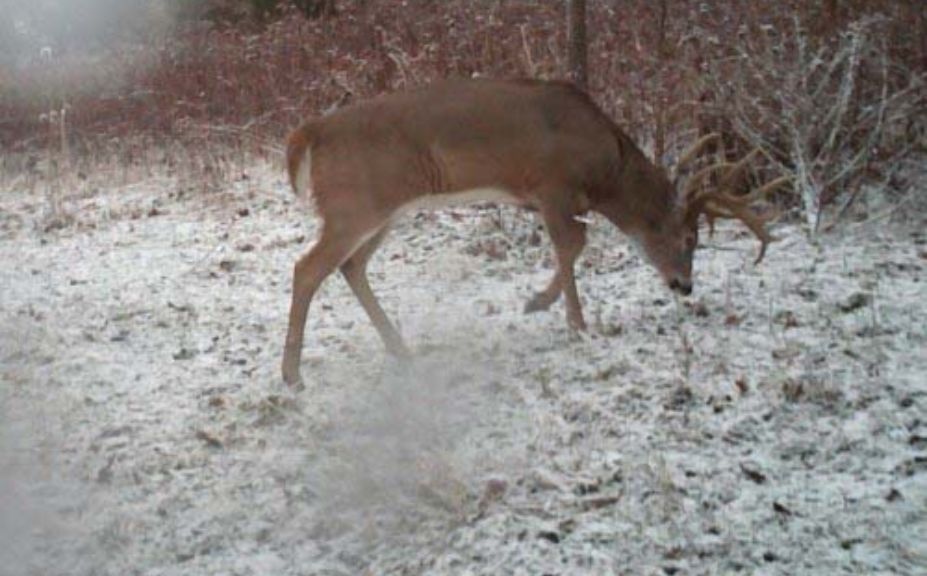
Like the picture above indicates, I have had the pleasure of several mature buck encounters when the moon phase is nearly or completely full, during mid to late morning hours. Here is my whitetail moon phase strategy:
1. Choose a stand location near a mature buck bedding area, adjacent to a quality nature food source of acorns, apples or other preferred forages. A small, naturally appearing food plot withing mixed upland habitat isn't a bad choice either. Water can be a huge bonus! 2. Complete avoid any potential bedding areas on the way to a morning stand location. Often waiting until after daybreak is best so that you do not potentially spook deer pre-daylight 3. Make sure to stay on the downwind of both the food source and the bedding area, until at least 1 pm. One of my best encounters was on a 6-7 year old giant that I saw exit his bedding area and begin feeding on an oak flat at 11:15. The shot came at 12:15, after he had fed for an hour, moved to within 35 yards, bedded and then stood to stretch. 4. I actually avoid hunting during the evening with a full moon, that may negatively influence a quality late morning stand location the following morning. While I have found that a rising full moon phase can create a negative for an evening hunt, morning hunts can be positively influenced. 5. Dark evenings can be outstanding evenings to connect on a mature monster! My favorite evening hunts are at least 6-7 days on either side of the full moon phase.
Conclusion
Does any whitetail moon phase influence the actual timing of the rut? I personally haven't experienced that, and decades of various scientific research supports that. However, I do believe that a full moon phase influences the feeding intensities for whitetails. When you see a bright moon rising during the evening hours, make sure to place a huge priority on a mid to late morning sit the following day, all season long.
